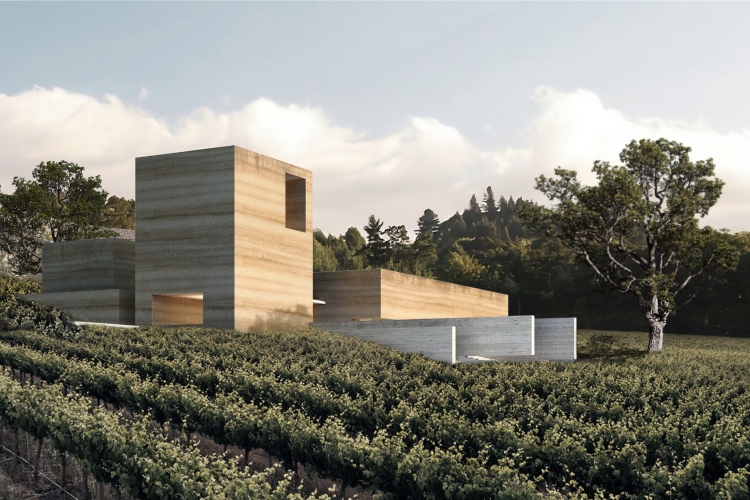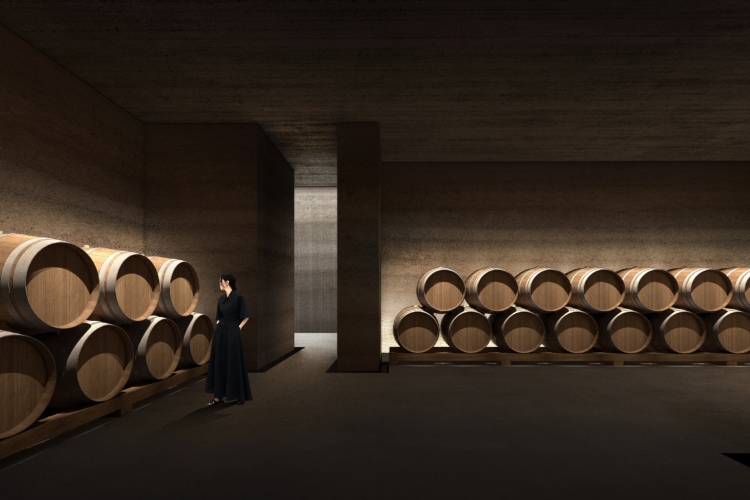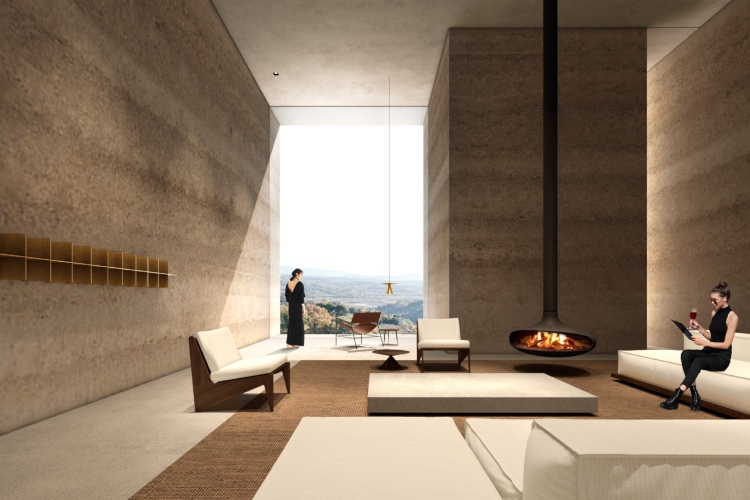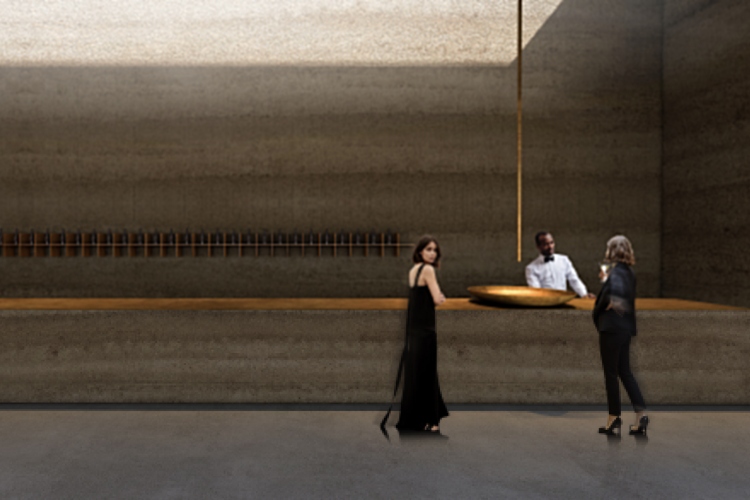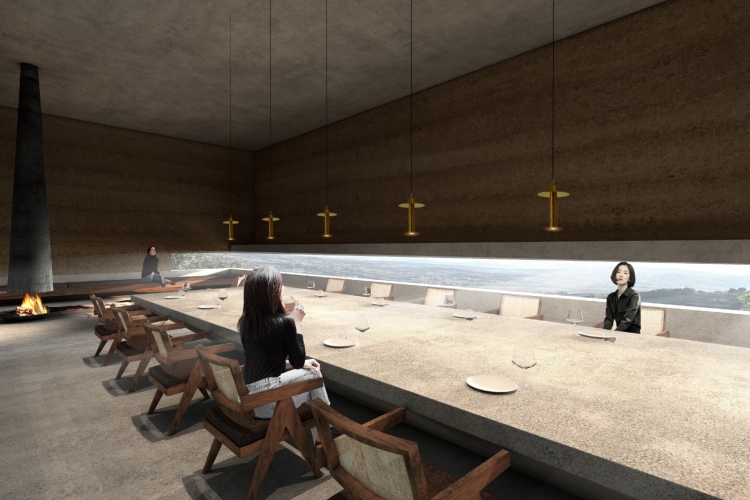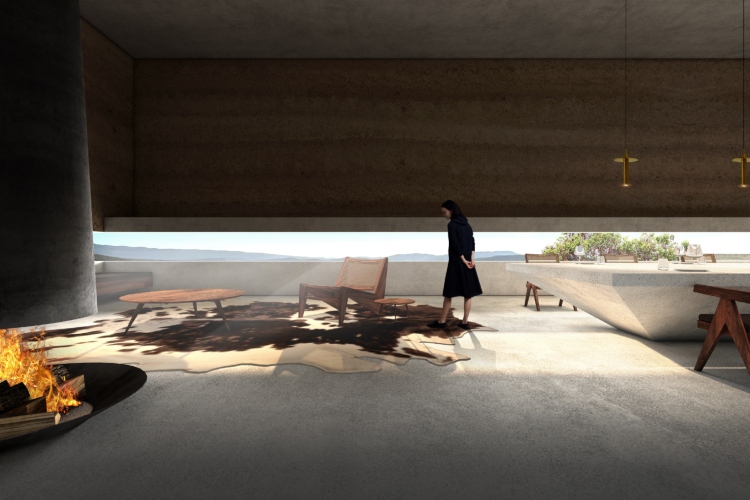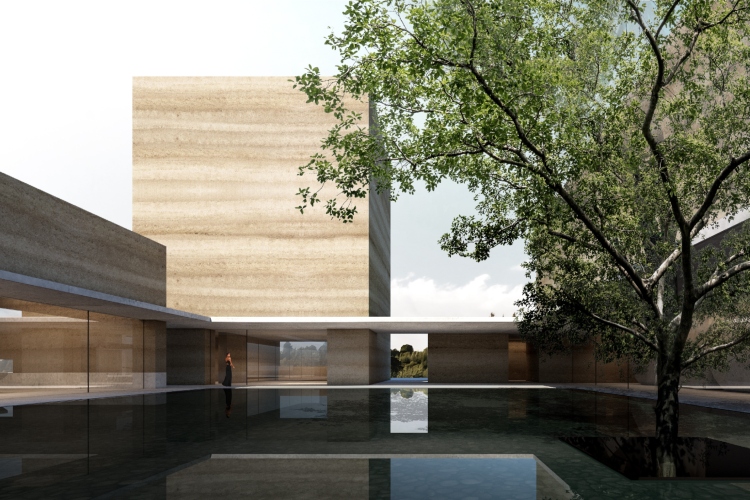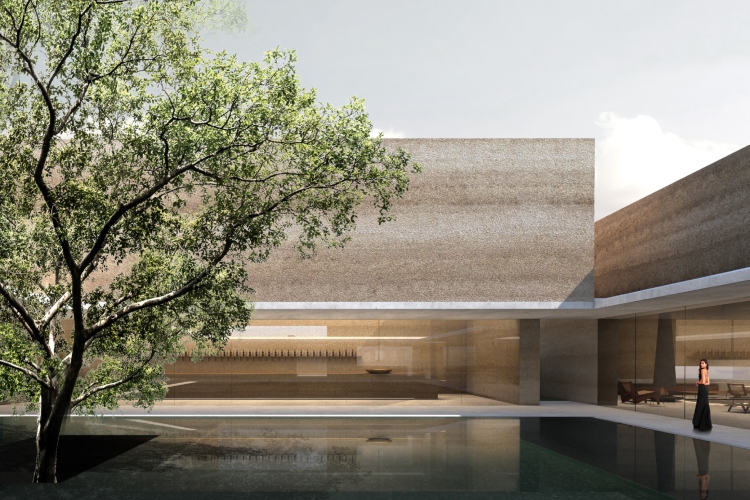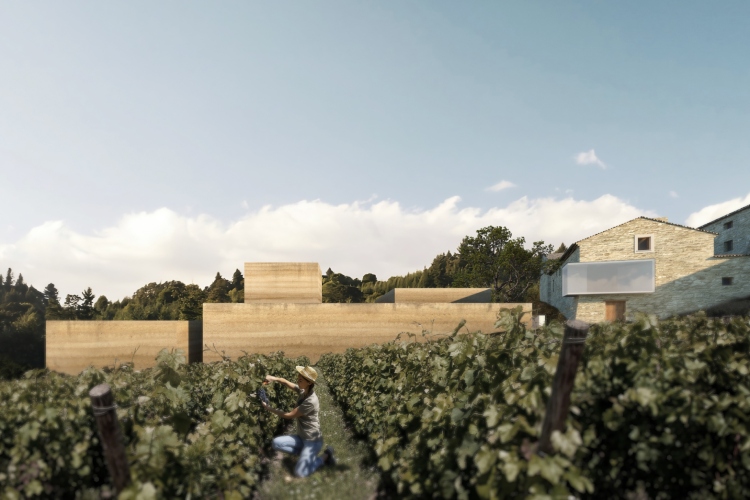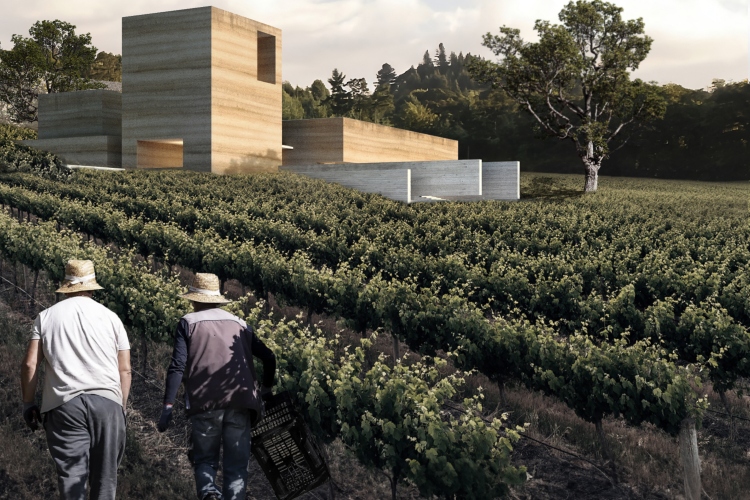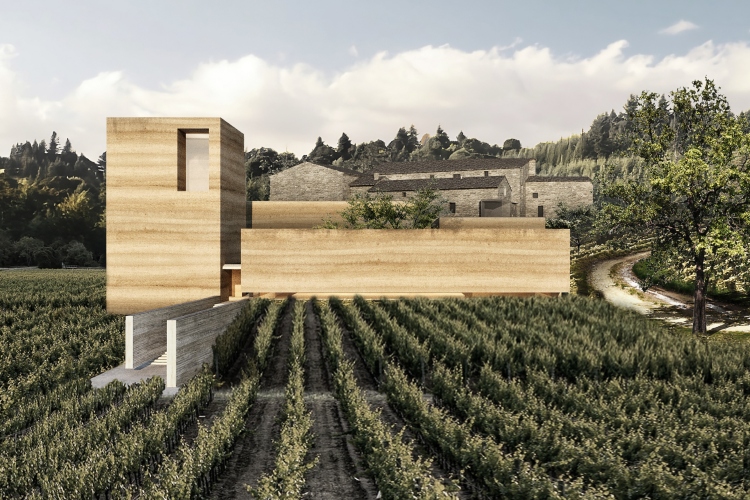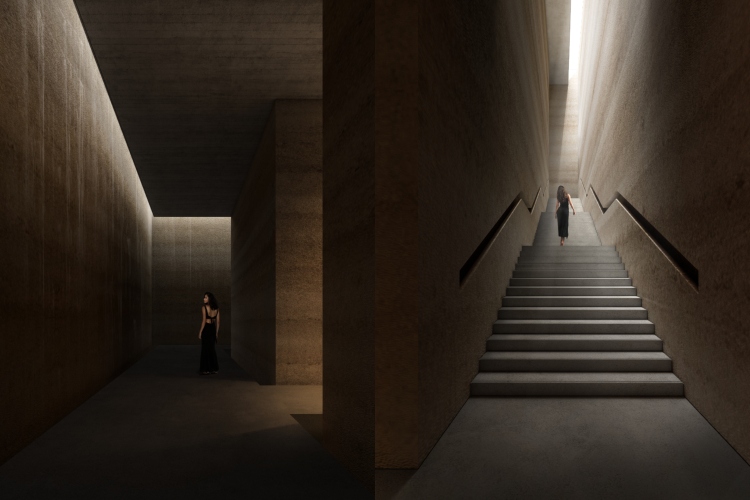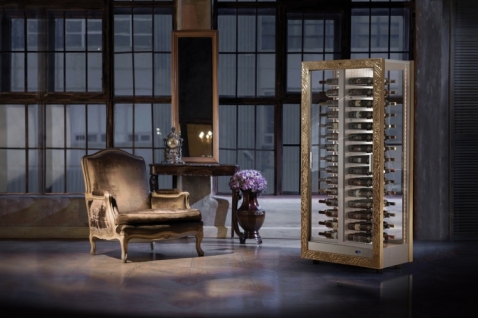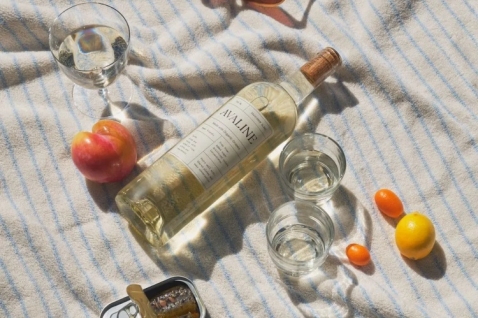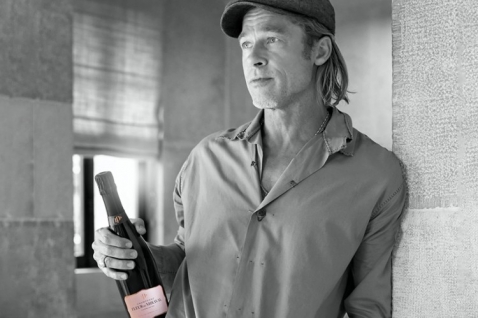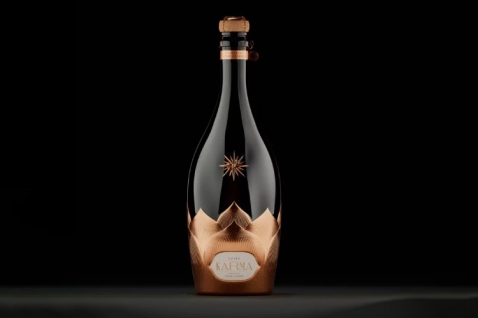More photos
The beauty of wine lies in its exceptional essence, a harmonious symphony crafted by nature itself...
With that in mind, JSPA Design presents the Châteauneuf-du-Pape wine cellar, a multifaceted project in the predominantly rural and agricultural area of Châteauneuf-du-Pape in France. The project's goal was to create a wine cellar, expand the existing winery to increase its production capacity, open a shop, and develop new public spaces for events.
"The design process was guided by the idea of achieving a clear connection between the existing architecture and the new extension, simultaneously creating a coherent whole in terms of scale, architectural form, and typology," explains Johan Sarvan, founder of JSPA Design from Beijing.
Rammed-Earth walls, a traditional material with a distinctly contemporary style, allow the building to blend seamlessly into the landscape and enhance the sense of connection with nature. The material also offers excellent thermal and acoustic insulation properties.
Different program functions are divided into four distinct volumes focused around a central courtyard. This fragmented architecture creates a coherent proportion with the surrounding typologies, allowing the project to further integrate. The connection between the old and the new is provided only through an underground link, enabling the existing and the new to coexist without direct contact.
Water circulation within the building was also a driving force of the project. Cantilevered structures direct rainwater absorbed by green roofs to the central courtyard pool where it collects. Narrow slits along the courtyard's edges allow excess water to be directed to the underground wine cellar, reaching a lower level where a cistern finally gathers it for future use. Through natural evaporation, the water reservoir provides the necessary humidity level for proper wine preservation throughout the year.
The atmosphere of the space is an important aspect that has been carefully considered, and the wine cellar itself is located underground to maintain a constant temperature. The cellar is illuminated by soft natural light entering through fine openings in the slab, creating sequences of shadows and light that evoke a sense of depth and mystery.
"When visitors step into the cellar, they are transported into a world of sensory experiences, where visual perceptions, sounds, and the aromas of the winemaking process blend to create a deep immersion," says Florent Bui, partner at JSPA Design.

